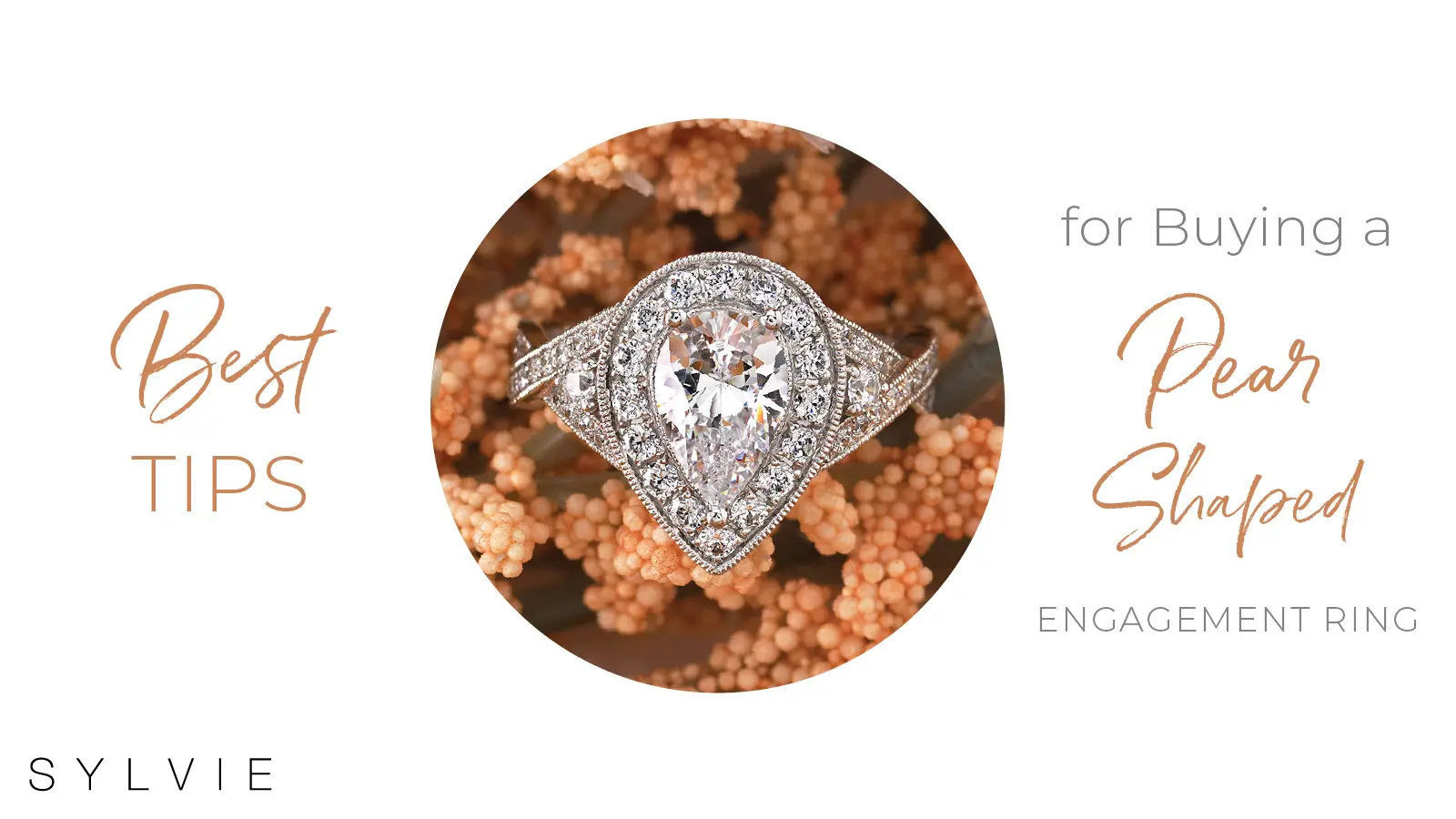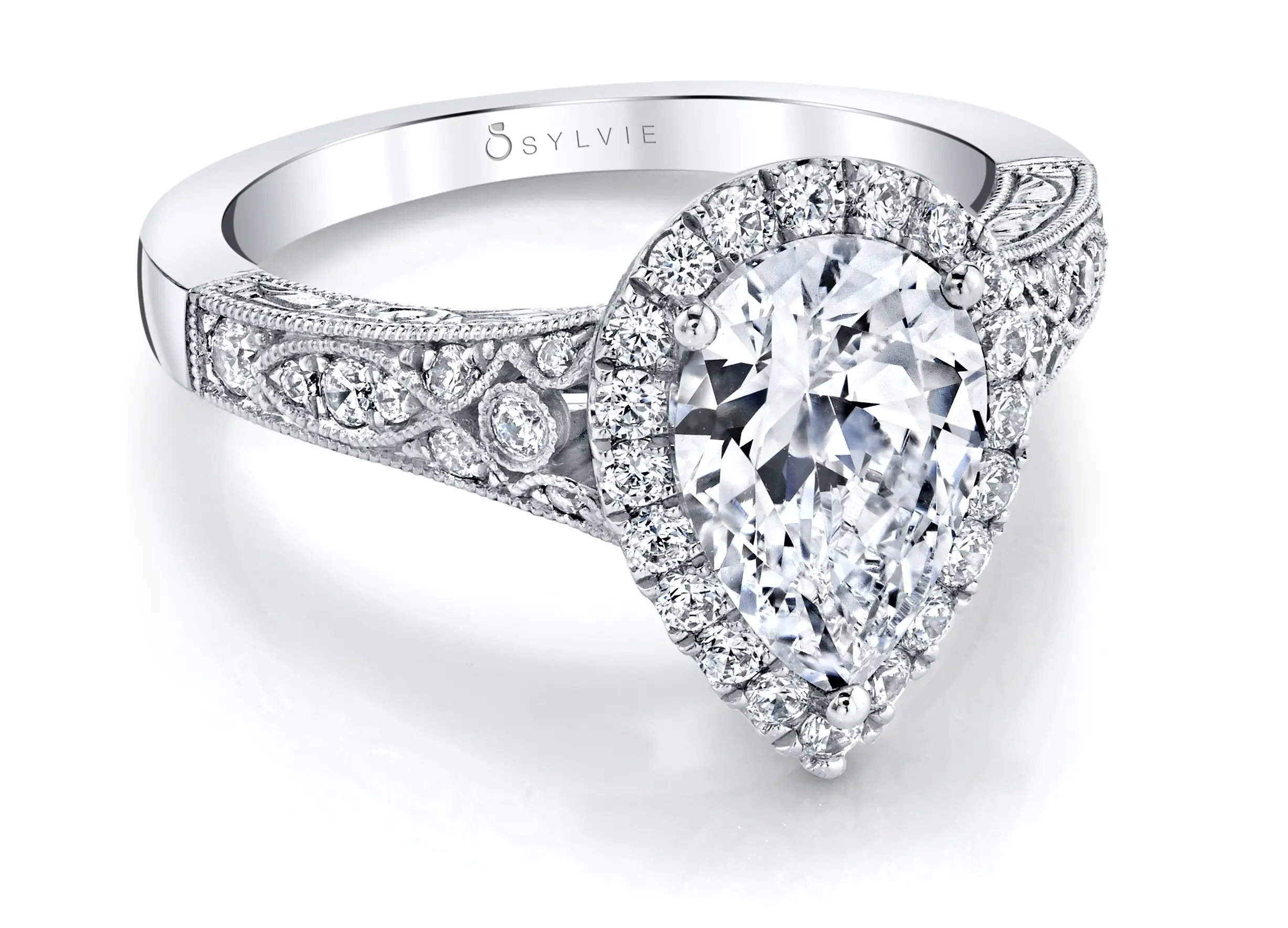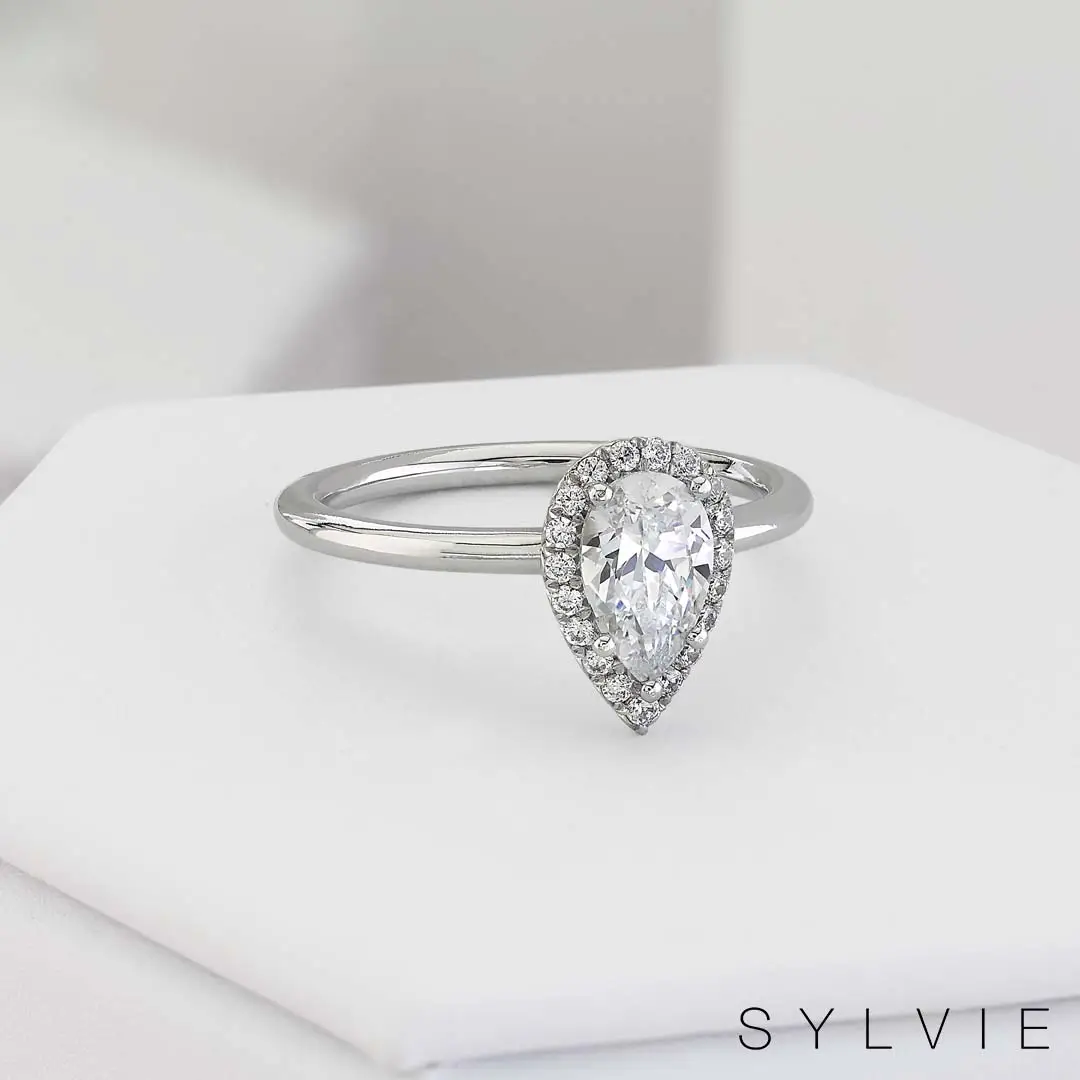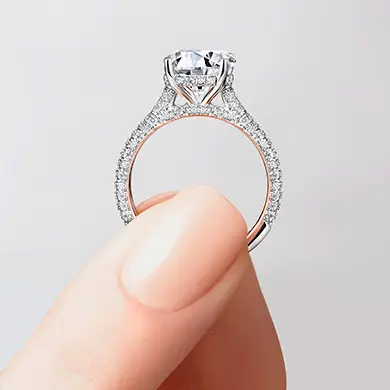The pear-shaped diamond cut is a combination of the round-brilliant and marquise cut. With one curved and one pointy end, this diamond cut is also known as the teardrop shape. The pear-cut has been around for hundreds of years and is used as the side stone on an engagement ring. However, many people have also started using this unique diamond shape as the center stone on solitaire engagement rings.
Pear-shaped diamonds for engagement rings have become increasingly popular due to their similarities with the round-brilliant cut, mainly that fantastic sparkle it exudes through its various facets. Great skill is required to create a pear-shaped diamond, making it difficult to spot a high-quality stone. However, don’t let this deter you from choosing this magnificent stone.
Here are a few top tips to help you choose the perfect pear-shaped diamond engagement ring.
Look for Symmetry
When it comes to choosing a pear-cut diamond, symmetry is everything. Even the slightest wonkiness is extremely noticeable in a pear-shaped diamond. The easiest way to check the symmetry of the gem is to divide it down the center to see if each section is a mirror image of the other. Moreover, the pointy end of the stone must also align perfectly with the tip of the curved end. You will also need to make sure that there aren’t any straight edges on the sides of the cut, and the rounded point should also not be too wide.
Decide on the Length to Width Ratio
The perfect length to width ratio for a pear-shaped diamond is 1.50 to 1.75. If you opt for a stone with a length lesser than 1.50, the stone will start to look squat. On the other hand, if you opt for a stone with a width of over 1.75, the gem will appear too narrow and long. This doesn’t mean that you don’t choose a stone out of this length to width ratio. Remember, it’s all about personal preference.
Be On the Lookout for the Bowtie Effect
A bowtie is the darkened area that, as by the name, is in the shape of a bowtie. This phenomenon lies across the middle of a diamond and occurs due to a lack of light reflecting from the surface of the gem. Pear-shaped diamonds are typically susceptible to the bowtie effect, but this can also range from being severe to almost undetectable. The presence or lack of the bowtie effect also shows how well a diamond has been cut. So, if the bowtie is the first aspect of the stone to catch your eye, you should consider opting for another stone.
Choose Your Engagement Ring Setting
Due to its delicate shape, a pear-shaped diamond needs to be placed in a protective setting. One of the common concerns of the shape is the chipping of the pointy end.
A six-prong setting is typically considered the best setting for a pear-shaped stone. This pear engagement ring setting features five prongs that hold the diamond securely in place, while the sixth prong protects the pointy end. A five-prong setting is a secure option as well but is better for smaller diamonds.
Some of our favorite styles for pear engagement rings include solitaire pear rings, vintage pear rings, and a classic favorite, pear engagement rings with halos.
Regardless of the setting you choose for your pear-shaped diamond, make sure that the diamond has a large bottom prong to protect the point. With Sylvie, each engagement ring is put through a vigorous 150 point quality inspection to make sure each ring is designed to last, while also maintaining its beauty, forever!
Check for its Clarity Grading
A pear-cut diamond hides inclusions phenomenally. If your stone is less than a carat, then you should choose a pear diamond from Flawless to Very Slightly Included 2. However, if you’re opting for a large diamond, then you must opt for a Flawless to Very Very Slightly Included 2 stone. Make sure to have a good look at the stone to ensure that it’s eye-clean.
The Bottom Line
Pear-shaped diamonds are fantastic gems that look great with all metals and give your fingers an elongated appearance. However, since their shape is a little tricky, it can be challenging to come across the perfect pear-shaped stone. We hope that our tips listed above help you find the perfect pear-shaped engagement ring that’s as unique as your partner!




